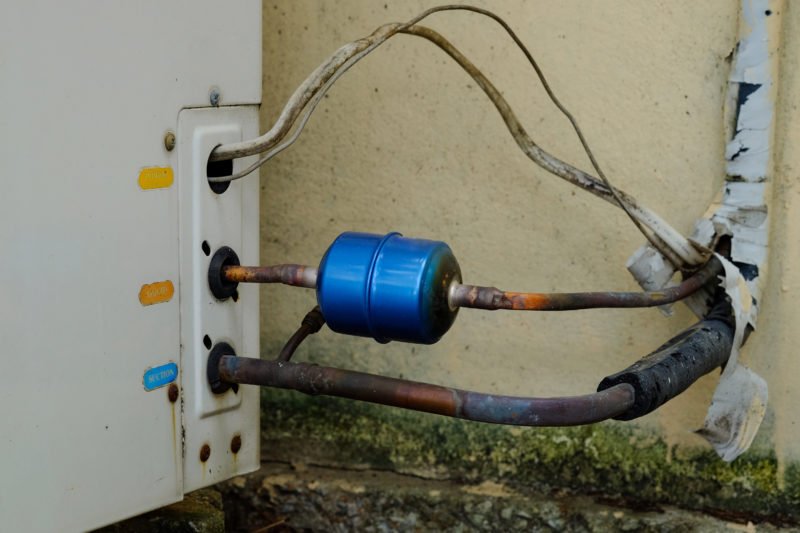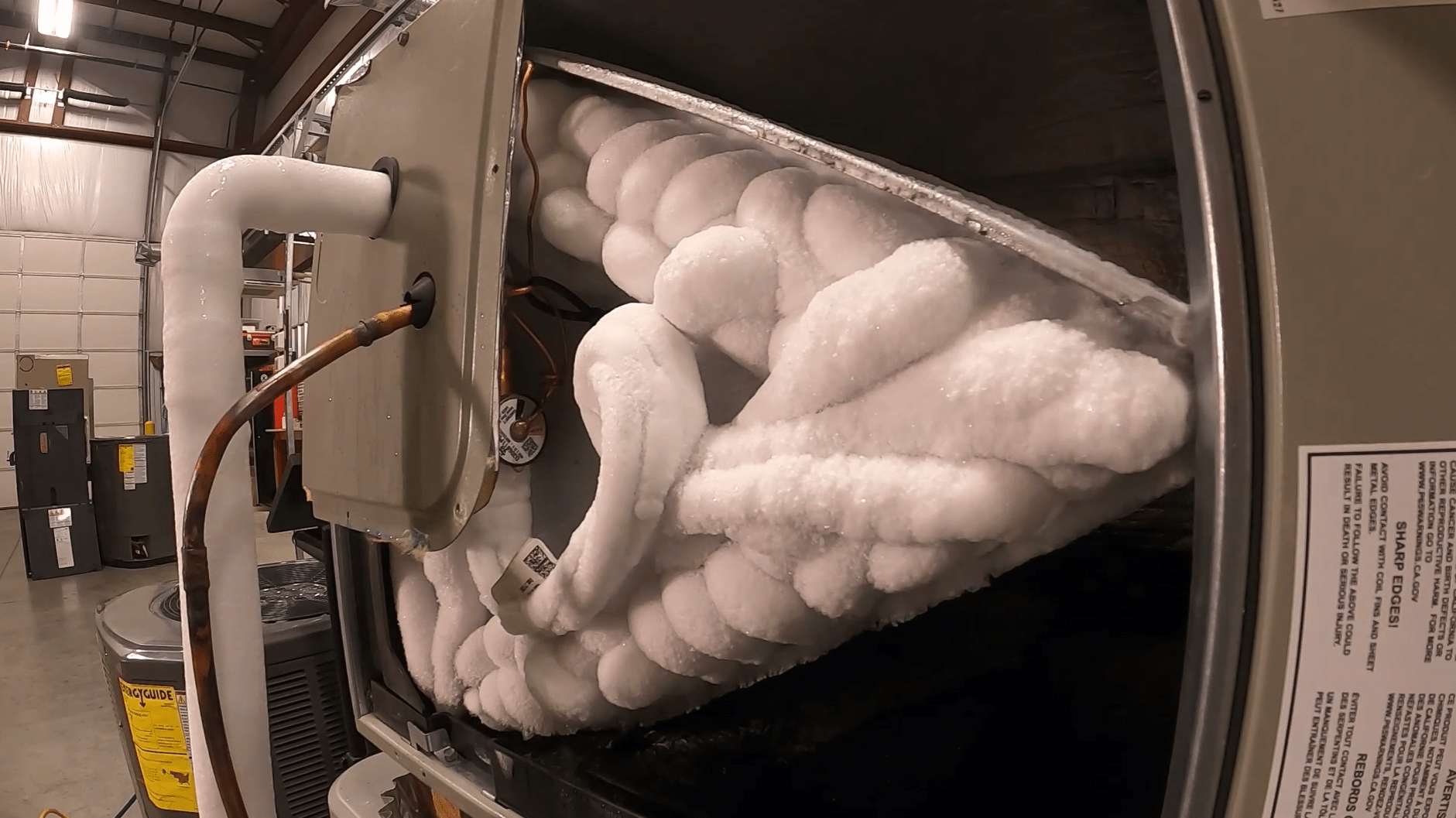My AC Pipe Is Frozen - What Should I Do? Instructions for Residents
My AC Pipe Is Frozen - What Should I Do? Instructions for Residents
Blog Article
We have stumbled on this article relating to What Causes AC Pipes To Freeze? below on the internet and reckoned it made good sense to relate it with you in this article.

Introduction
Uncovering that your a/c pipe is frozen can be worrying, specifically throughout hot summer months when you rely on your ac system the most. Recognizing what to do in such a circumstance is essential to prevent additional damage to your air conditioning system and ensure your convenience inside.
Comprehending the Causes
Several aspects can contribute to the freezing of an AC pipe. Recognizing these causes can assist you address the problem effectively.
Lack of Airflow
One typical cause of a frozen a/c pipeline is inadequate airflow. When the airflow over the evaporator coil is limited, it can create the coil to drop below freezing temperature, resulting in ice development on the pipe.
Low Refrigerant Levels
Inadequate cooling agent degrees in your AC system can additionally cause an icy pipe. Low refrigerant levels can trigger the pressure in the system to drop, causing the cold of wetness on the evaporator coil.
Winter Conditions
In cooler environments, freezing temperature levels outside can add to the cold of air conditioner pipelines. If your a/c device is not appropriately protected or if there are leakages in the ductwork, cold air can penetrate the system, causing the pipeline to ice up.
Dirty Air Filters
Dirty or clogged air filters can limit air flow in your air conditioning system, resulting in numerous problems, consisting of a frozen pipeline. It's necessary to change or clean your air filterings system on a regular basis to ensure proper air flow and stop ice buildup.
Indicators of a Frozen Air Conditioning Pipe
Identifying the signs of an icy AC pipe is crucial for timely activity.
Reduced Airflow
If you notice a considerable decline in airflow from your vents, it could suggest an icy pipeline.
Ice Buildup on the Pipe
Visible ice accumulation on the cooling agent line or the evaporator coil is a clear sign of an icy AC pipe.
Odd Sounds from the Unit
Uncommon audios, such as hissing or gurgling, originating from your AC unit can signal that there's ice present on the pipeline.
Immediate Actions to Take
When faced with a frozen air conditioning pipe, it's necessary to act swiftly to avoid additional damage to your cooling system.
Turning off the air conditioner
The initial step is to turn off your a/c to avoid the system from running and intensifying the issue.
Looking for Blockages
Examine the area around the interior system for any obstructions that might be blocking air flow, such as furniture or curtains.
Defrosting the Pipe
You can utilize mild techniques like placing towels taken in warm water around the icy pipe to assist thaw it gradually.
Safety nets
Taking preventive measures can assist avoid future incidents of an icy a/c pipeline.
Regular Maintenance Checks
Set up regular upkeep contact a professional HVAC service technician to make certain that your AC system is running effectively.
Transforming Air Filters
Frequently change or cleanse your air filters to stop airflow limitations and keep optimum efficiency.
Insulating Exposed Pipes
If your AC pipes are exposed to cold temperatures, think about protecting them to avoid cold throughout winter season.
Seeking Professional Help
If DIY techniques fail to deal with the issue or if you're unsure about just how to continue, it's finest to seek assistance from a certified HVAC service technician.
When DIY Methods Fail
If your attempts to thaw the pipe or address various other problems are unsuccessful, it's time to call in a specialist.
Value of Hiring a Professional HVAC Technician
A certified HVAC technician has the expertise and devices necessary to detect and repair concerns with your AC system securely and effectively.
Final thought
Dealing with an icy air conditioning pipeline can be an aggravating experience, however knowing just how to respond can assist decrease damages and restore convenience to your home. By recognizing the reasons, identifying the signs, and taking punctual activity, you can effectively deal with the problem and protect against future occurrences.
Frozen AC Line: Why It Happens & What To Do About It
A frozen AC line can be a rather peculiar sight in a place like Phoenix, Arizona where nothing ever freezes. In this post, we’ll discuss what makes an air conditioner line frozen – and what you can do about it.
Dirty Air Filters
Did you know that you should be cleaning or replacing your air filters on a monthly basis? Failing to do this can result in airflow issues that, in turn, cause your evaporator coils and lines to freeze over. You’ll notice a buildup of ice on both components, although the buildup on your pipes will, of course, be more evident unless you open your air condition up to reveal the coils.
What To Do About It
Give your air filter a good cleaning if it’s reusable. If not, replace the filter outright. Next, switch your air conditioner’s fan setting on and leave it there for 2-3 hours. This will draw warm air in, helping to thaw your evaporator coil. You can also check out this article for some tips on cleaning the coils themselves if you’d like to speed the process up. Before you switch the unit back to its normal state, make sure the supply vents are completely unobstructed and free of dust or other debris.
If you keep having this issue even after replacing your filters regularly, contact a local HVAC repair company and have them inspect your evaporator coil, ductwork, and any other components that may be at fault. If you live in the Phoenix, Arizona area, give American Home Water and Air a call.
Low Refrigerant Levels/Leakage
What To Do About It
Contrary to what air conditioner “recharge” companies often tell their clients about refrigerant, it should never need to be simply refilled. You see, refrigerant runs in what experts refer to as a “closed loop.” Refrigerant really shouldn’t be leaving that loop. If it is, you’ve got a leak.
Paying someone to come and pump more refrigerant into your system (aka “recharge” it) isn’t the solution. Doing that will simply kick the can down the road. Besides, refrigerant leaks can be harmful to the environment and people in your home.
Rather, you need to take care of the leak with the help of a technician. Check out this article for some more information about dealing with air conditioners that are leaking refrigerant. Before you contact a technician, switch your thermostat to the off position. Then, switch the fan setting on and let it run for 2-3 hours so the unit can thaw.
Improper Temperature Setting
Improper temperature settings can also cause a drop in your air conditioner’s pressure. What many people don’t realize is that air conditioners are actually designed to run when temperatures have fallen above roughly 60 degrees Fahrenheit. If you run the unit when it’s cold outside, you’ll run into many issues, including frozen components.

As an enthusiastic reader on Why Is Ice On My Outside Air Conditione, I figured sharing that piece of content was worth the trouble. Are you aware of somebody else who is looking into Have a Frozen AC Line? Here’s How to Fix It? Be sure promote it. Thanks a lot for your time. Don't forget to check up our blog back soon.
Click Here Report this page